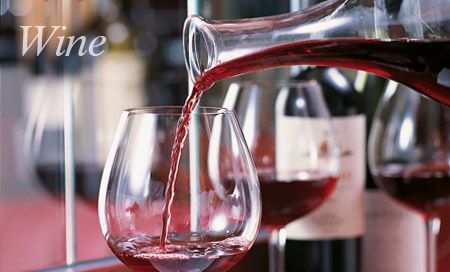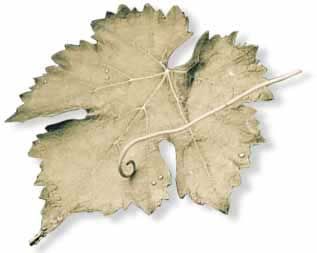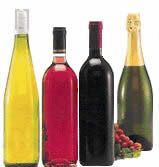|
|||||
|
|||||||
|
    An initiative of :Stichting Food-Info
|
| Food-Info.net> Food Products > Wine What is wine?
Wine is an alcoholic beverage made from fermented grape juice. Wines made from other fruits are always named accordingly. The chemical composition of wine is about 87.7% water, 11% alcohol, 1% acid, and 0.2% tannins. There are various processing steps in making and producing wine; these are described shortly below. Firstly, the grapes are allowed to ripen in the vineyard until they attain a suitable sugar content, which is about 18% or more, and the right level of acidity. During ripening in the vineyard, grapes may become infected by moulds, yeasts, and bacteria. These infections generally destroy desired flavours and colour and introduce undesirable acetic acid and oxidised flavours. However, the infection of white grapes with the rot fungus called Bortrytis cinerea is very advantageous. Infection of white grapes with this mould leads to the concentration of the juice in the berry and also gives a characteristic aroma to the wine.  (Source) The second step in the making of wine is the fermentation of the grapes with various yeasts and lactic acid bacteria. Grapes can be fermented by adding selected wine yeasts to dominate the yeast that originates from the vineyard (grape surface, leaves, and stems) and the winery environment (tanks, barrels, hoses). The addition of a selected yeast culture ensures a complete fermentation without the loss of aroma as well as the production of a wine of consistent flavour quality. Fermentation temperature and characteristics of the selected yeasts determine the amount and type of flavours produced. During spontaneous fermentation, a range of different yeasts grow at different stages of fermentation. Therefore, a winemaker must carefully guide spontaneous fermentations to reduce the risk of spoilage by unwanted microorganisms. Successful spontaneous fermentations can produce very flavourful wines with a variety of sensorial properties, e.g., aroma and consistency derived from the juice flavours. Following yeast fermentation is a second fermentation by lactic acid bacteria, known as malolactic fermentation. During this process, lactic acid bacteria convert malic acid to lactic acid and carbon dioxide (CO2), which results in a lowering of the acidity of the wine. The metabolic activities of the bacteria also change the fruit flavour of wine and incorporate some flavour compounds. Temperature, pH, and availability of other sources of energy affect the rate of malic acid utilisation. Subsequent to fermentation, wine is clarified by filtration and then stabilised. Wine flavours can continue to change while the wine is stored in wooden barrels, stainless steel tanks, and glass bottles. At this stage of the process, various yeasts and bacteria may well be present in the wine; thus, the wine flavours could be further modified. These yeasts are generally considered spoilage yeasts. Depending on the type of microorganism and the extent of their growth, desirable fruit flavours can be replaced by unpleasant odour and taste. Different wines benefit from prolonged or only short-term ageing.  (Source) Further reading :
More wine info:
|
|
| ||
| Food-Info.net is an initiative of Stichting Food-Info, The Netherlands | ||||||